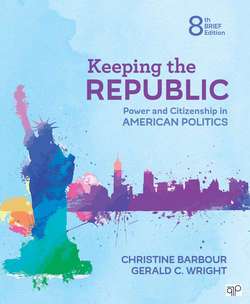Читать книгу Keeping the Republic - Christine Barbour - Страница 148
На сайте Литреса книга снята с продажи.
Prior Restraint
ОглавлениеPrior restraint, a restriction on the press before its message is actually published, was the primary target of the founders when they drew up the First Amendment. The Supreme Court has shared the founders’ concern that prior restraint is a particularly dangerous form of censorship and has almost never permitted it. Two classic judgments illustrate their view. In Near v. Minnesota, the Court held that a Minnesota law infringed on a newspaper publisher’s freedom of the press. Although an extreme emergency, such as war, might justify previous restraint on the press, wrote Justice Charles Evans Hughes, the purpose of the First Amendment is to limit it to those rare circumstances.51 Similarly and more recently, in New York Times Company v. United States, the Court prevented the Nixon administration from stopping the publication by the New York Times and the Washington Post of the Pentagon Papers, a “top-secret” document about U.S. involvement in Vietnam. The Court held that “security” is too vague a concept to be allowed to excuse the violation of the First Amendment. To grant such power to the president, it ruled, would be to run the risk of destroying the liberty that the government is trying to secure.52
prior restraint censorship of or punishment for the expression of ideas before the ideas are printed or spoken
